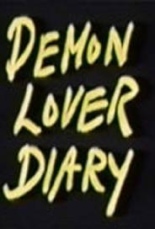
 What happens when a speedometer-cable factory worker mortgages his house, car and furniture, and takes two weeks of “sick leave” to make what he’s certain will be “a masterpiece” of horror cinema? Something far short of that, as demonstrated by that eventual film, 1977’s The Demon Lover, and this warts-and-all documentary on its making, with apologies to the word “making.”
What happens when a speedometer-cable factory worker mortgages his house, car and furniture, and takes two weeks of “sick leave” to make what he’s certain will be “a masterpiece” of horror cinema? Something far short of that, as demonstrated by that eventual film, 1977’s The Demon Lover, and this warts-and-all documentary on its making, with apologies to the word “making.”
Never officially released commercially and not likely to, Demon Lover Diary was captured by the camera of Joel DeMott as her boyfriend, Jeff Kreines, volunteers to shoot the debut film of his friend, the aforementioned toiler Donald G. Jackson, who co-directed with Jerry Younkins, an arrogant hothead who cut off his own finger to get $8,000 of insurance money to fund their dream. They should have dreamed harder.
 Don and Jerry are revealed less as creative geniuses and more as temper-prone diva babies. For some reason, they don’t want the donated efforts of a sound man, Jeff’s buddy Mark Rance; Don deceives his kindly mother, at whose house they’re crashing; and one of their recruited female stars is missing one of her front teeth. Plus, she’s 14 — a year for every scheduled day of principal photography.
Don and Jerry are revealed less as creative geniuses and more as temper-prone diva babies. For some reason, they don’t want the donated efforts of a sound man, Jeff’s buddy Mark Rance; Don deceives his kindly mother, at whose house they’re crashing; and one of their recruited female stars is missing one of her front teeth. Plus, she’s 14 — a year for every scheduled day of principal photography.
While Don and Jerry claim to have worked their asses off, Jeff, Joel and Mark instead find an extremely disorganized set. Don won’t help move any equipment: “A director really shouldn’t be carrying anything. I’m carrying the weight of the whole film.” The only continuity among their scenes, Jeff notes, is stupidity. Don and Jerry are all talk and no action: “We think we’re going to come up with the best low-budget horror movie ever made,” says Jerry.
They didn’t. All this and a cameo by a belching Ted Nugent! —Rod Lott

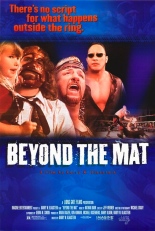
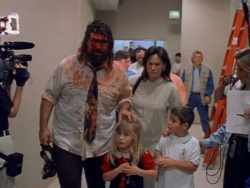
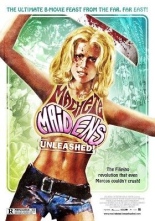
 Chock full of interviews with the movement’s filmmakers and performers who remain alive (plus John Landis), the excellent Unleashed also considers the careers of Cirio H. Santiago (Savage!,
Chock full of interviews with the movement’s filmmakers and performers who remain alive (plus John Landis), the excellent Unleashed also considers the careers of Cirio H. Santiago (Savage!, 
 It’s a colorful history of pioneers like Gorgeous George, Sputnik Monroe (“He was the only person I know who could get run over by a Greyhound bus and not get hurt”), karate-chopping Tojo, black masked wrestler Sweet Ebony Diamond, arrogant Jackie Fargo (“I was meaner than a damn rattlesnake and tougher than a two-dollar steak”), the infamous Jerry Lawler and celebrity opponent Andy Kaufman, not to mention matches against bears and with midgets (“You could put midgets on your card, and your house would double. … I liked a lot of those midgets”).
It’s a colorful history of pioneers like Gorgeous George, Sputnik Monroe (“He was the only person I know who could get run over by a Greyhound bus and not get hurt”), karate-chopping Tojo, black masked wrestler Sweet Ebony Diamond, arrogant Jackie Fargo (“I was meaner than a damn rattlesnake and tougher than a two-dollar steak”), the infamous Jerry Lawler and celebrity opponent Andy Kaufman, not to mention matches against bears and with midgets (“You could put midgets on your card, and your house would double. … I liked a lot of those midgets”).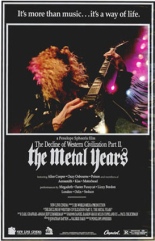
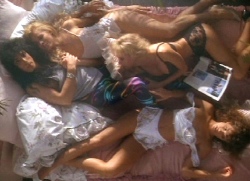 Its subtitle is somewhat misleading, since the bulk of the acts under view here are of the glam variety, leaving just Megadeth for those who take their metal seriously. A few legends pop in and out during the interviews (including Ozzy Osbourne, Alice Cooper, Steven Tyler, Joe Perry, Lemmy, Paul Stanley and Gene Simmons), but for the most part, we’re left with clueless wannabes (like the members of Odin, who insist they’ll only be satisfied until they’re as big as Led Zeppelin or The Beatles. I wonder how that worked out for them?), along with a few almost-weres (London, Faster Pussycat) and Poison (who almost inexplicably come of as sweet, self-aware dudes).
Its subtitle is somewhat misleading, since the bulk of the acts under view here are of the glam variety, leaving just Megadeth for those who take their metal seriously. A few legends pop in and out during the interviews (including Ozzy Osbourne, Alice Cooper, Steven Tyler, Joe Perry, Lemmy, Paul Stanley and Gene Simmons), but for the most part, we’re left with clueless wannabes (like the members of Odin, who insist they’ll only be satisfied until they’re as big as Led Zeppelin or The Beatles. I wonder how that worked out for them?), along with a few almost-weres (London, Faster Pussycat) and Poison (who almost inexplicably come of as sweet, self-aware dudes).